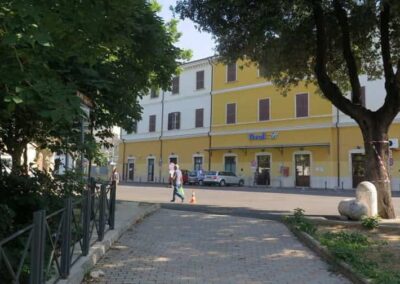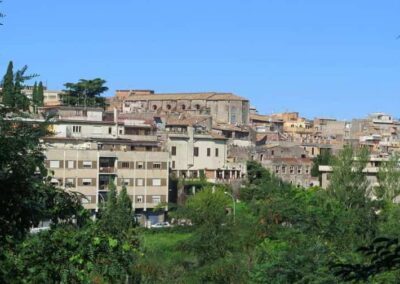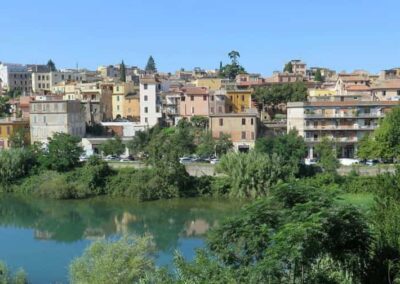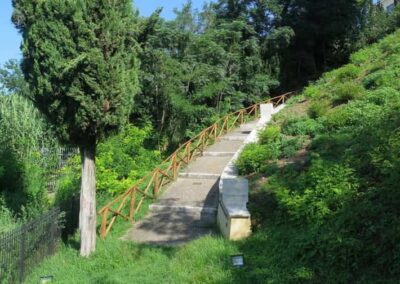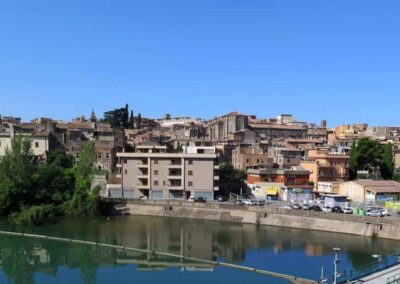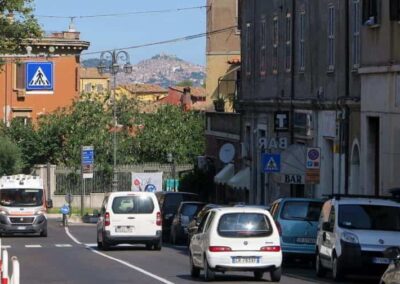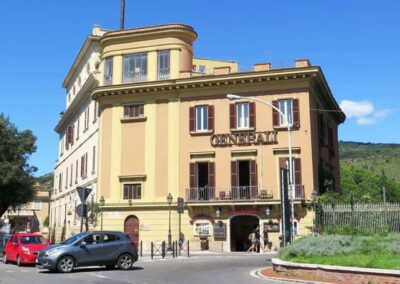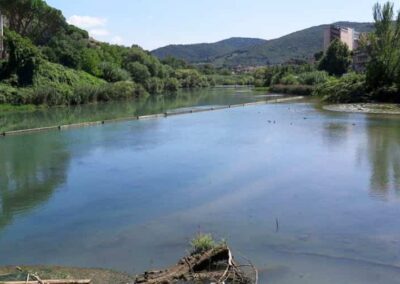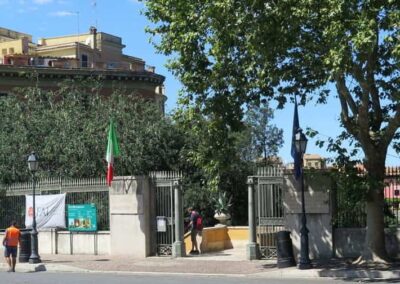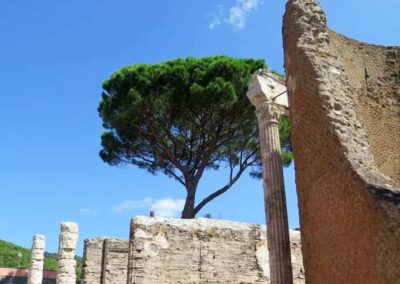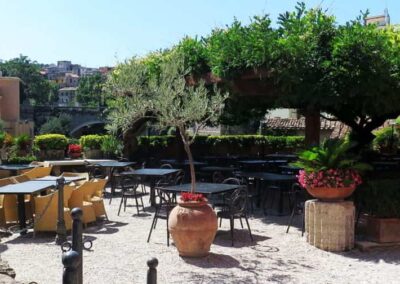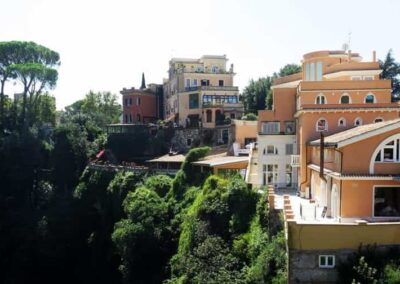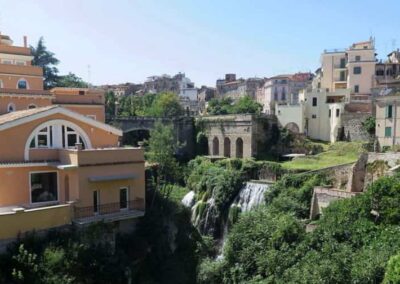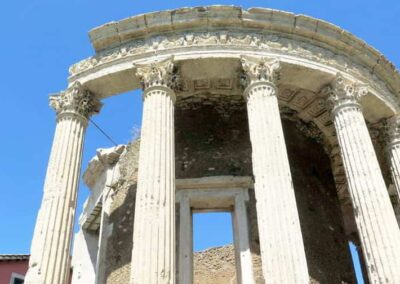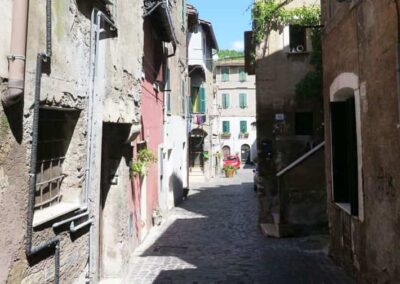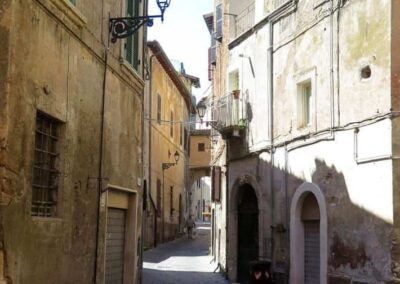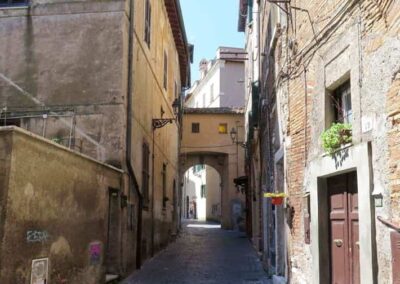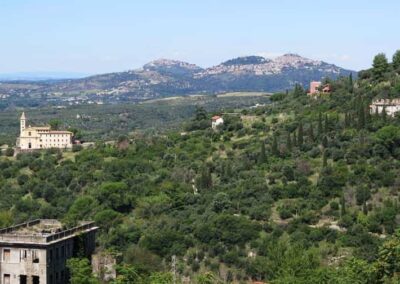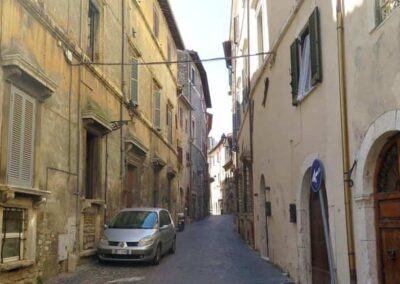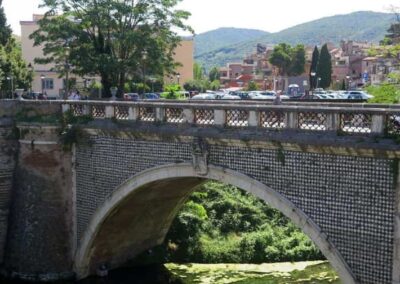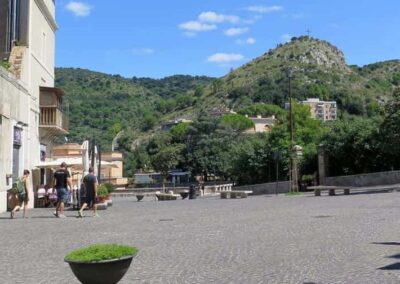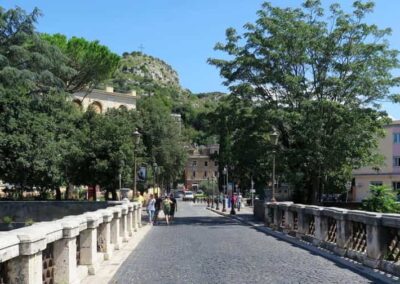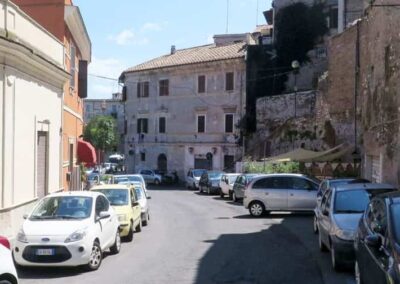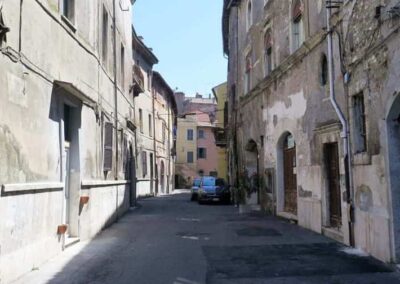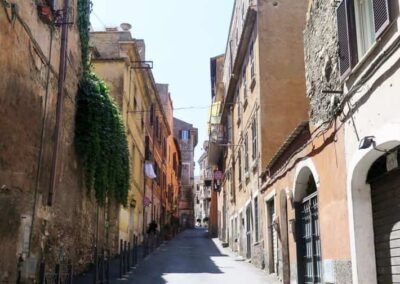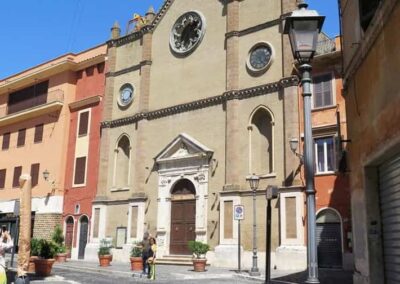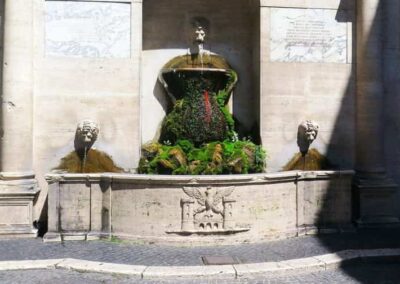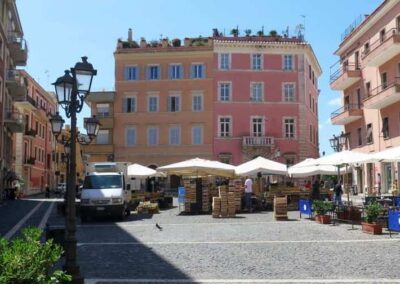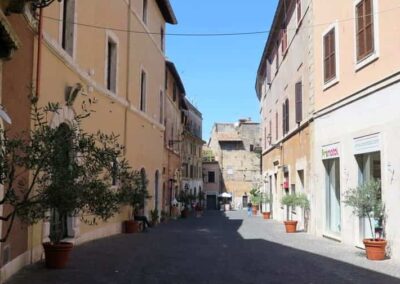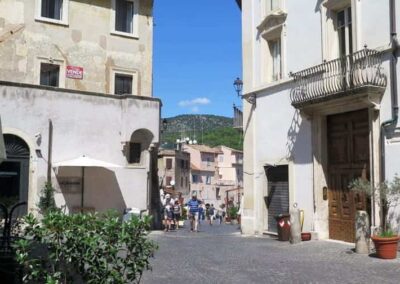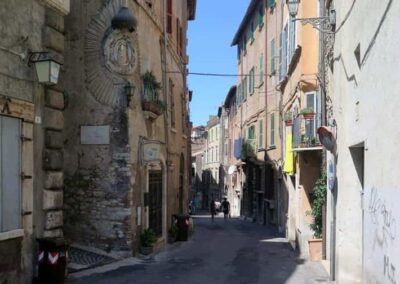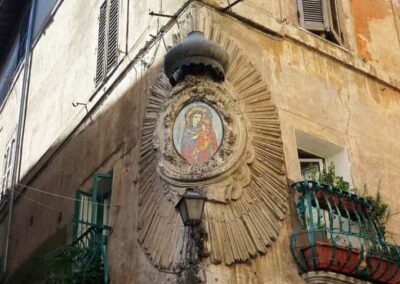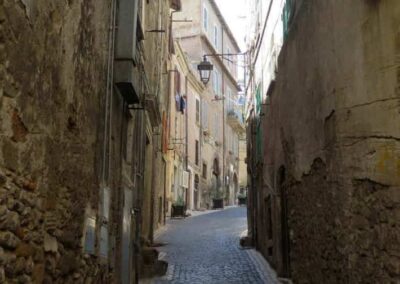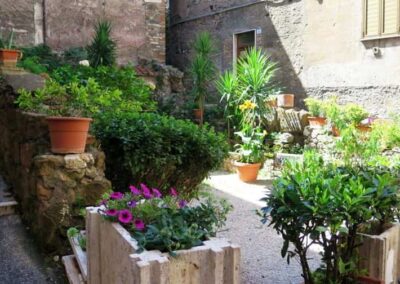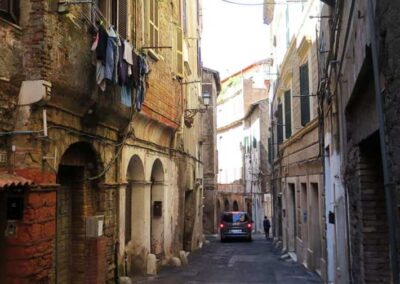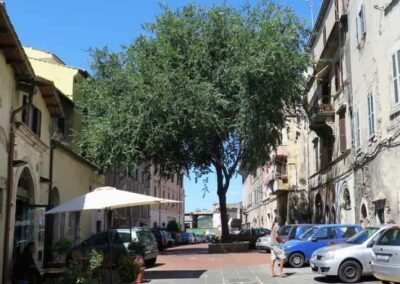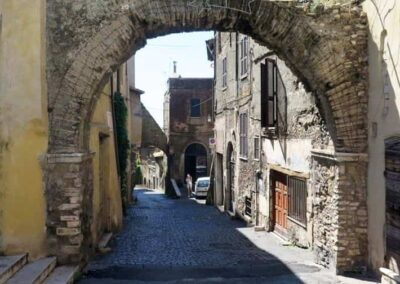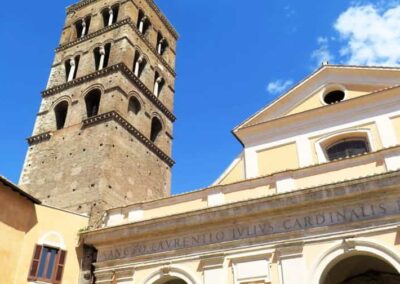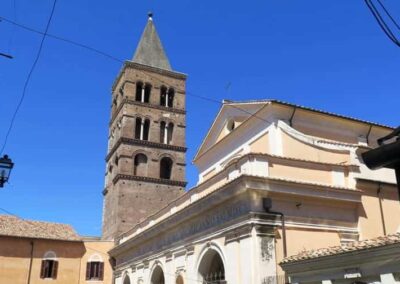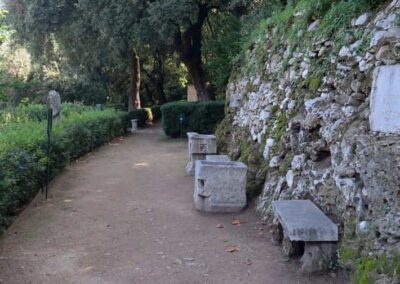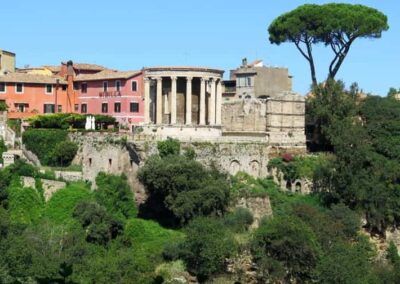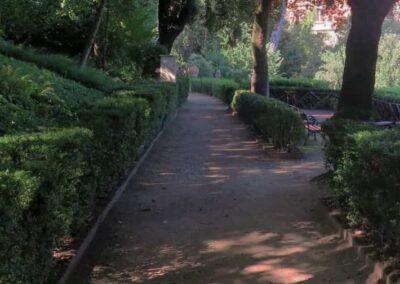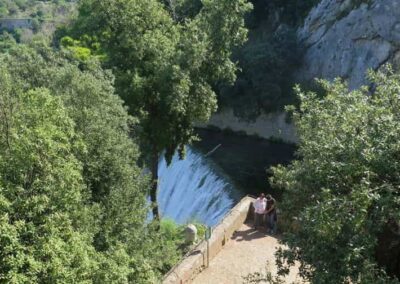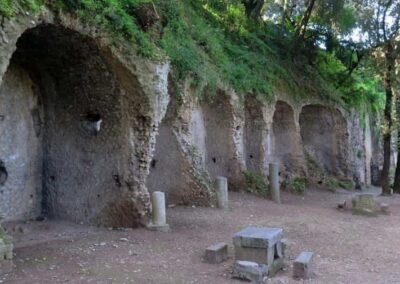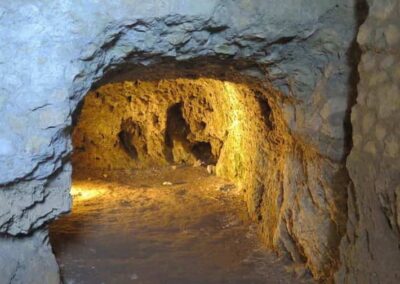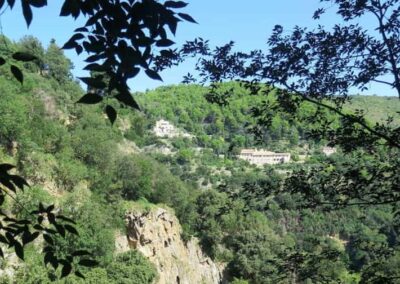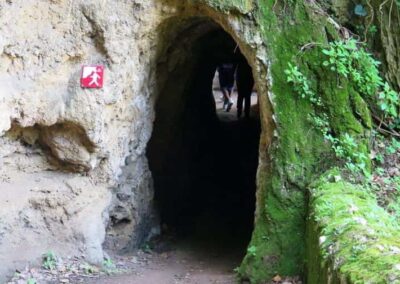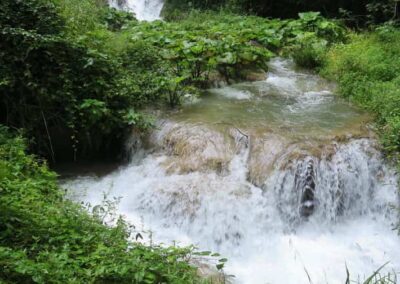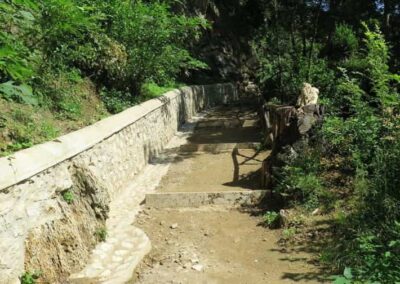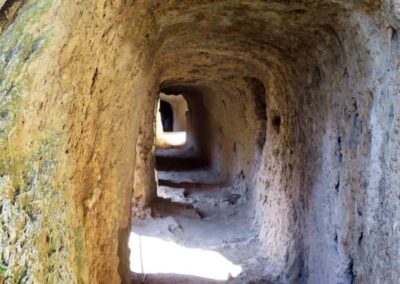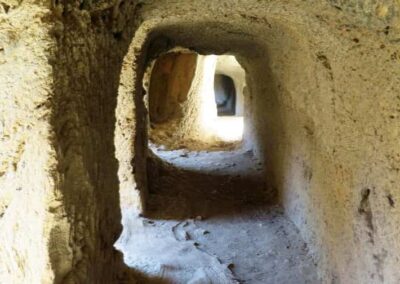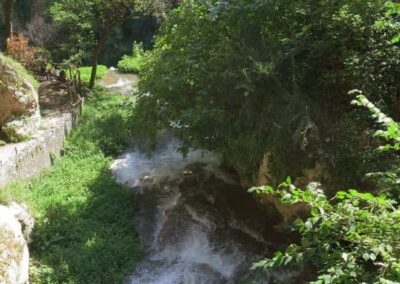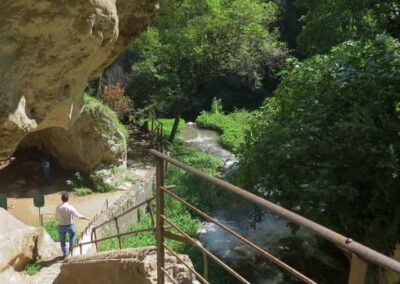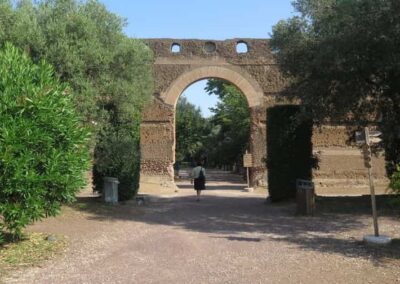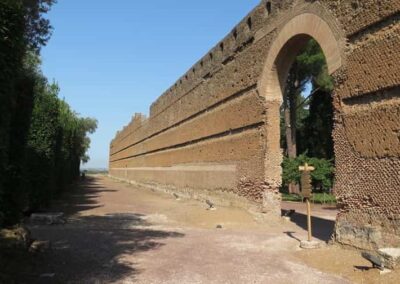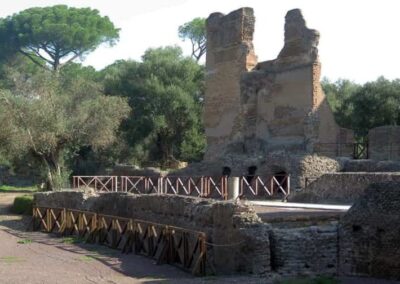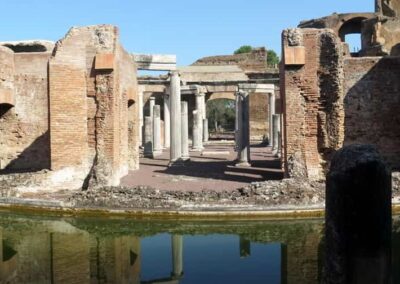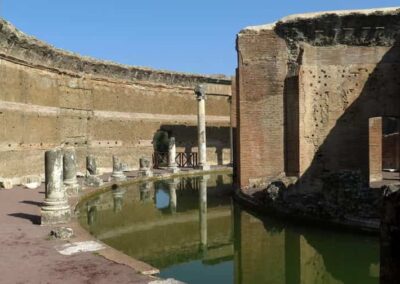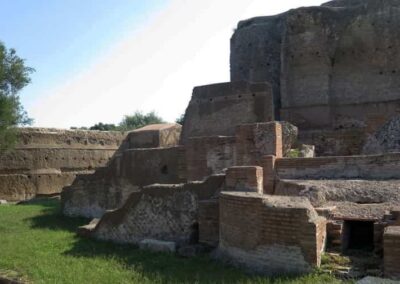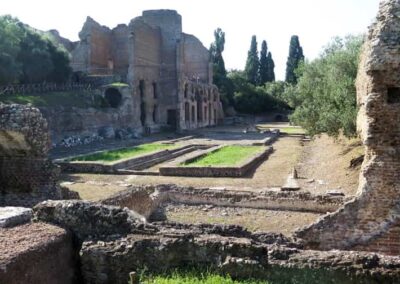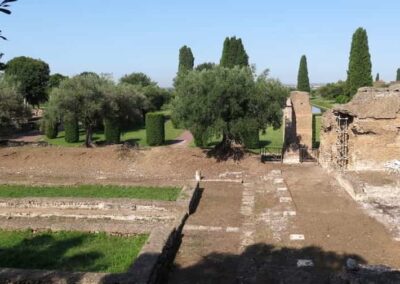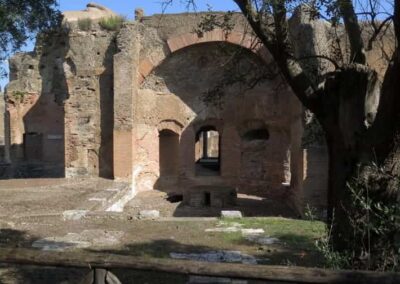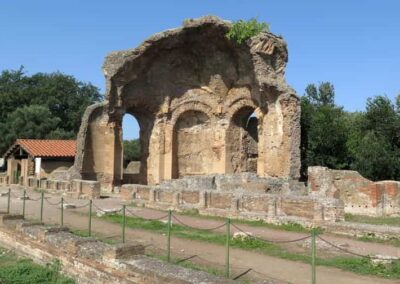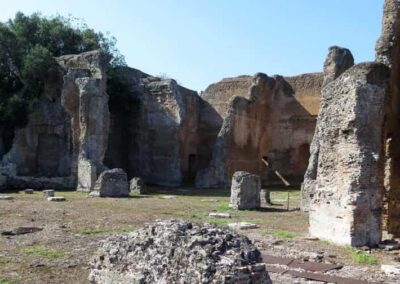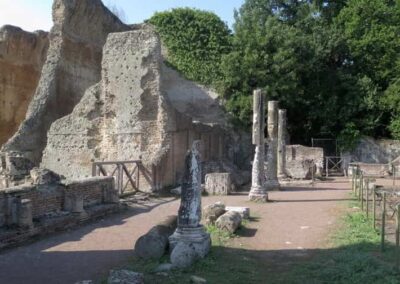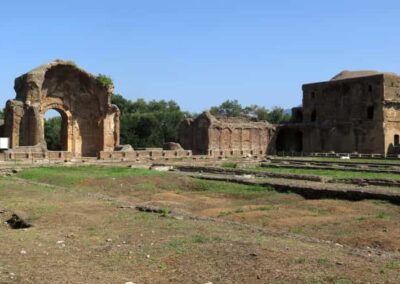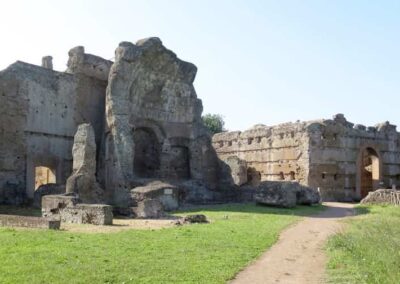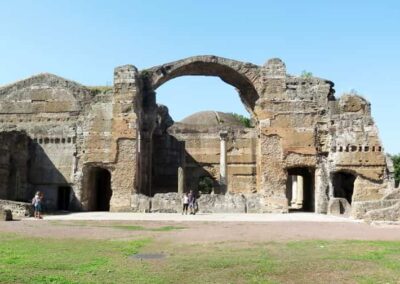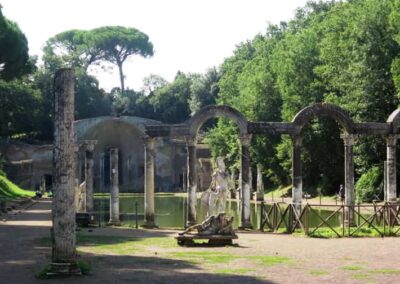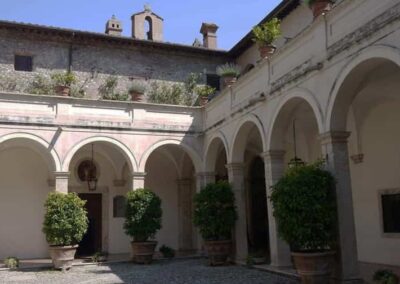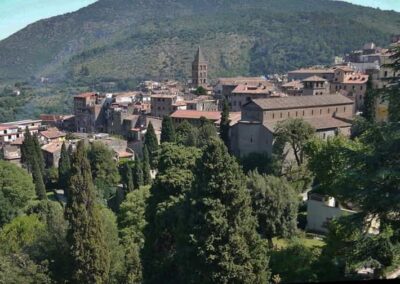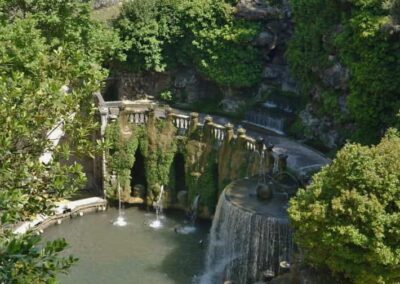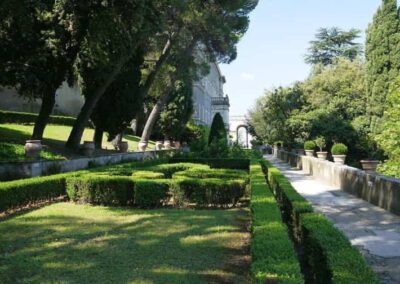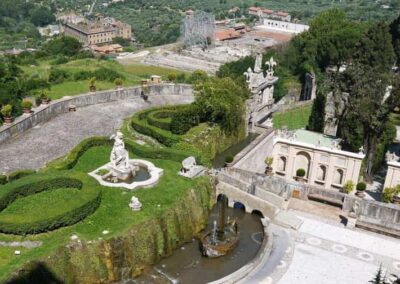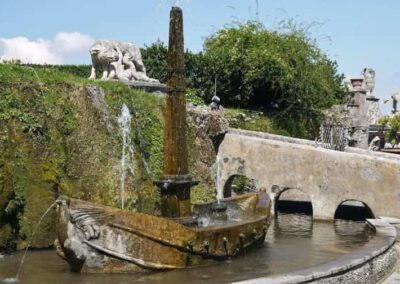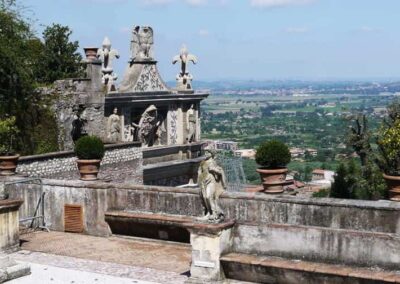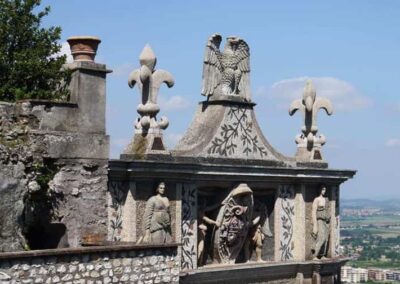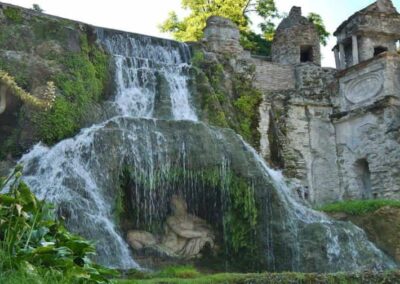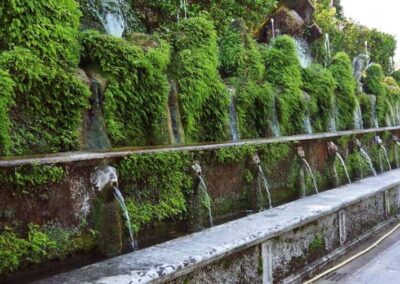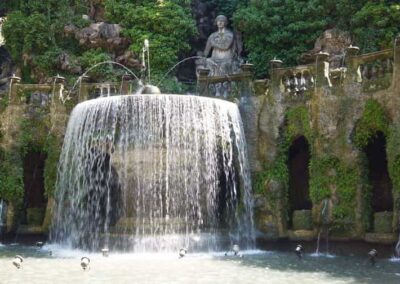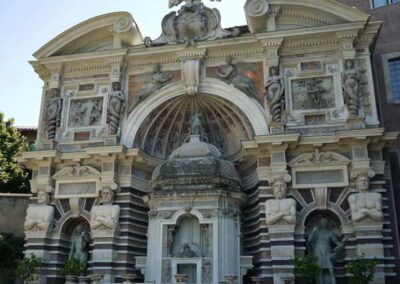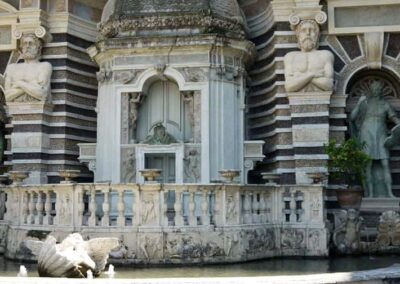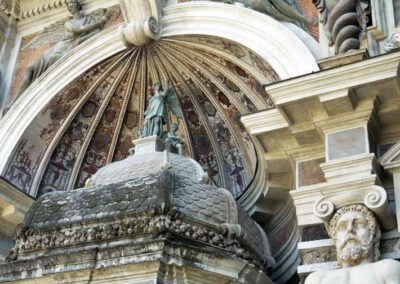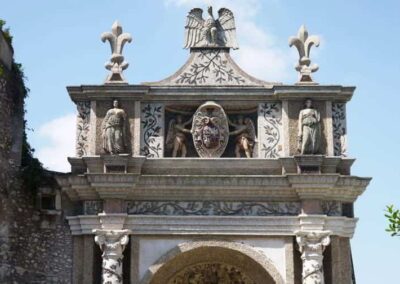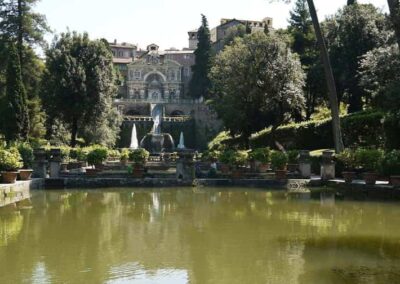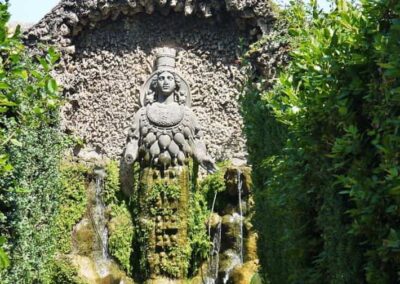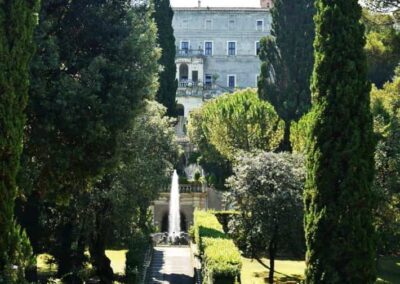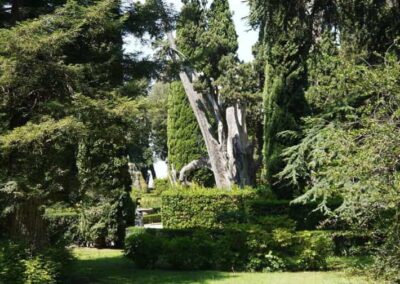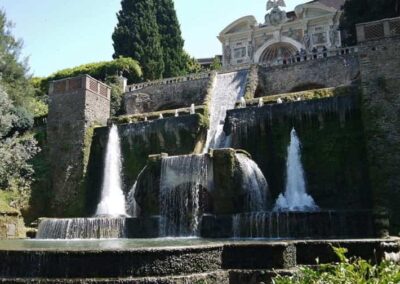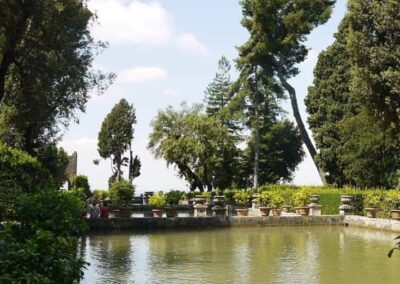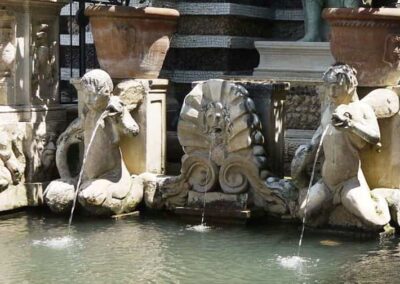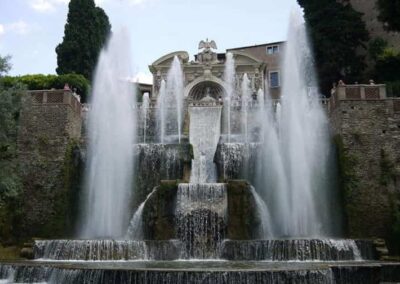HOME
THE REGIONS OF ITALY
PLACES IN ITALY
Italy in Photos
Piazza Rivarola, 00019 Tivoli, Italy (August 2018)
Tivoli
Located just 30 kilometers east of Rome, Tivoli is a town rich in history, culture, and natural beauty. With its ancient Roman roots, stunning villas, and scenic landscapes, Tivoli has been a favoured retreat for Roman emperors, Renaissance artists, and modern-day travellers alike. Its location on the slopes of the Sabine Hills, overlooking the Aniene River, provides breathtaking views, while its centuries-old heritage offers a deep connection to Italy’s illustrious past. Tivoli’s history stretches back to antiquity. Originally known as Tibur, the town predates Rome itself and was an important settlement for the Italic tribes. Over time, Tivoli became a significant Roman municipality, developing into a favoured getaway for Roman nobility due to its cool climate, natural springs, and proximity to the capital. The Roman Emperor Hadrian built his vast countryside retreat, Villa Adriana, in Tivoli, which is one of the most impressive examples of Roman architecture and design still visible today. Throughout the Middle Ages and the Renaissance, Tivoli continued to thrive. It became home to wealthy cardinals and aristocrats who built luxurious villas and palaces that contributed to the town’s artistic and cultural importance. Among these, Villa d’Este, with its magnificent Renaissance gardens and fountains, stands as a testament to Tivoli’s enduring appeal to Italy’s elite. One of Tivoli’s most famous landmarks is Villa Adriana (Hadrian’s Villa), a UNESCO World Heritage site. Built by Emperor Hadrian in the 2nd century AD, this sprawling complex is an architectural marvel. Spanning over 250 acres, Villa Adriana was not just a private residence but also a small city, complete with palaces, baths, theatres, libraries, and gardens. The villa was inspired by Hadrian’s travels across the Roman Empire, incorporating elements of Greek, Egyptian, and Roman architecture. Today, the ruins of Villa Adriana give visitors a glimpse into the grandeur of ancient Rome. Its architectural innovations, such as the Canopus, (a pool inspired by the Egyptian Nile) and the Teatro Marittimo (a circular island villa), reveal the sophistication and creativity of Hadrian’s vision. Exploring the site allows travellers to walk in the footsteps of one of Rome’s most famous emperors and immerse themselves in the history of imperial Rome.
While Villa Adriana showcases Roman antiquity, Villa d’Este represents the grandeur of the Renaissance. Built in the 16th century by Cardinal Ippolito II d’Este, this villa is famous for its elaborate gardens and countless fountains. Villa d’Este’s terraced gardens, designed by the architect Pirro Ligorio, are filled with lush greenery, water features, and grottoes. The gardens’ Hundred Fountains (Cento Fontane), the Oval Fountain, and the dramatic Neptune Fountain are masterpieces of hydraulic engineering and artistic design. Recognized as a UNESCO World Heritage site, Villa d’Este remains one of the most beautiful examples of Italian garden design, attracting visitors from around the world who come to admire its artistic and natural splendour. The interplay of water, sculpture, and nature in the villa’s design has left a lasting legacy on European garden art.
Tivoli’s appeal goes beyond its historical villas. The town is blessed with natural beauty, including the nearby Villa Gregoriana, a park that combines both historical ruins and natural wonders. This 19th-century garden is famous for its waterfalls, cliffs, and caves. The Great Waterfall (Cascata Grande), formed by the Aniene River, is a stunning highlight of the park. Villa Gregoriana provides a peaceful retreat for those who want to enjoy Tivoli’s lush landscapes, while also offering trails that lead through ancient ruins, caves, and scenic lookouts. What makes Tivoli truly unique is the way it harmonizes history, art, and nature. The town’s rich Roman past, its Renaissance treasures, and its natural landscapes create a multifaceted destination that offers something for every traveller. Whether you’re wandering through the ruins of Villa Adriana, marvelling at the fountains of Villa d’Este, or taking in the views from Villa Gregoriana, Tivoli is a place where the past and present come together in a way that is quintessentially Italian. Tivoli is a must-visit destination for anyone interested in exploring the cultural and historical heart of Italy. Its proximity to Rome makes it an ideal day trip, but the depth of its attractions and the charm of its streets could easily captivate visitors for much longer. With its world-renowned villas, ancient heritage, and natural beauty, Tivoli offers a timeless glimpse into Italy’s past while providing a serene and picturesque escape.
Photo Gallery of Walk 1 – Via S. Michele to Loggia Amblingh
Approximately 1.23 km – 0.76 miles
The walk starts in Via S. Michele – Parco Villa Comunale, Viale Rimembranza – Viale Rimembranza – Piazza Guglielmo Marconi – Via Tre Segni – walk back to Piazza Guglielmo Marconi – Municipal Market Hall of Santa Chiara, Piazza Santa Chiara – Via Sportello – Via Tripoli – Via Santa Maria – Chiesa Santa Maria Maggiore, Via Santa Maria – Via Santa Maria – Piazza del Tomolo – Via Catena – Porta Catena, Loggia Amblingh
Photo Gallery of Walk 2 – Piazza del Tomolo to Via Adriatica
Approximately 0.60 km – 0.37 miles
The walk starts in Piazza del Tomolo – Via Santa Maria – Via Giosia – Piazza L. V. Pudente – Cattedrale di San Giuseppe, Piazza L. V. Pudente – Piazza L. V. Pudente – Via Vescovado – Piazza L. V. Pudente – Piazza del Popolo – Via Adriatica
Parco Villa Gregoriana
Parco Villa Gregoriana in Tivoli, Italy, is a breath-taking natural and historical treasure that blends dramatic landscapes with centuries of cultural heritage. Nestled at the foot of Tivoli’s acropolis and overlooking the ancient temples of Vesta and Sibyl, the park offers visitors an extraordinary journey through nature, history, and art. Commissioned in the 1830s by Pope Gregory XVI, the park was created as part of an ambitious hydraulic project to control the Aniene River, whose frequent floods threatened Tivoli. The diversion of the river carved out spectacular gorges and cascades, including the awe-inspiring Great Waterfall, one of the highest in Italy, which remains the park’s most iconic feature.
Beyond its engineering marvels, Villa Gregoriana is a romantic landscape park designed to enchant the imagination. Winding paths lead through lush vegetation, hidden caves, and panoramic viewpoints that inspired artists, poets, and travellers during the Grand Tour. The interplay of rugged cliffs, roaring waters, and serene groves reflects the 19th-century taste for sublime and picturesque settings, making the park a living masterpiece of natural and human ingenuity.
Today, carefully restored and managed by the Fondo Ambiente Italiano (FAI), Villa Gregoriana offers an immersive experience where visitors can explore both archaeological remains and natural wonders. It stands as a unique destination, where history, engineering, and the untamed beauty of the Italian landscape meet, inviting all who enter to rediscover the timeless charm of Tivoli.
Villa Adriana
Villa Adriana, located in Tivoli near Rome, is one of the most remarkable archaeological sites in Italy and a UNESCO World Heritage Site. Built in the 2nd century AD as the imperial retreat of Emperor Hadrian, the villa is a vast complex that reflects the grandeur, sophistication, and cultural breadth of the Roman Empire. Unlike a traditional villa, this was more of an extensive city, covering over 120 hectares, with palaces, baths, temples, theatres, libraries, and gardens. It was here that Hadrian, known for his passion for art, philosophy, and architecture, created a unique environment inspired by the many places he had visited throughout the empire, from Greece and Egypt to Asia Minor.
The design of Villa Adriana is both innovative and symbolic. Spaces such as the Canopus, with its long pool and colonnades evoking the Nile, and the Maritime Theatre, a circular island residence for reflection and retreat, illustrate Hadrian’s desire to blend cultures and experiment with architectural forms. These structures, harmoniously integrated into the surrounding landscape, reveal not only the emperor’s personal tastes but also the cosmopolitan spirit of his reign.
Today, visitors to Villa Adriana can explore its monumental ruins, shaded pathways, and panoramic vistas, which still convey the sense of power and refinement that defined the Roman Empire at its height. More than an imperial residence, it is a timeless testament to human creativity, innovation, and the pursuit of beauty in harmony with nature.
Villa d’Este
Villa d’Este, located in Tivoli just outside Rome, is one of the most celebrated masterpieces of the Italian Renaissance and a UNESCO World Heritage Site. Commissioned in the mid-16th century by Cardinal Ippolito II d’Este, son of the famous Lucrezia Borgia, the villa was designed to reflect his prestige and cultural sophistication. While the villa itself is a fine example of Renaissance architecture, its true fame comes from the extraordinary gardens that surround it, considered among the most beautiful in Europe.
Set on the steep slopes of Tivoli, the gardens are a triumph of engineering and artistry, arranged over a series of terraces that descend dramatically toward the Roman countryside. The ingenious hydraulic system, developed without the use of pumps, channels the natural flow of water to power an astonishing network of over 500 fountains, grottoes, and cascades. Among its most iconic features are the grand Fountain of Neptune, the Rometta, which symbolizes ancient Rome, and the extraordinary Water Organ, which produces musical sounds through the movement of water.
Villa d’Este quickly became a model for European garden design, inspiring countless aristocratic estates across the continent. Today, visitors can stroll along shaded pathways, marvel at the harmony between art and nature, and enjoy sweeping vistas of the surrounding landscape. Villa d’Este remains a timeless celebration of human creativity, innovation, and the enduring spirit of the Renaissance.
COPYRIGHT © 2018-2025 ITALY IN PHOTOS - ALL RIGHTS RESERVED
